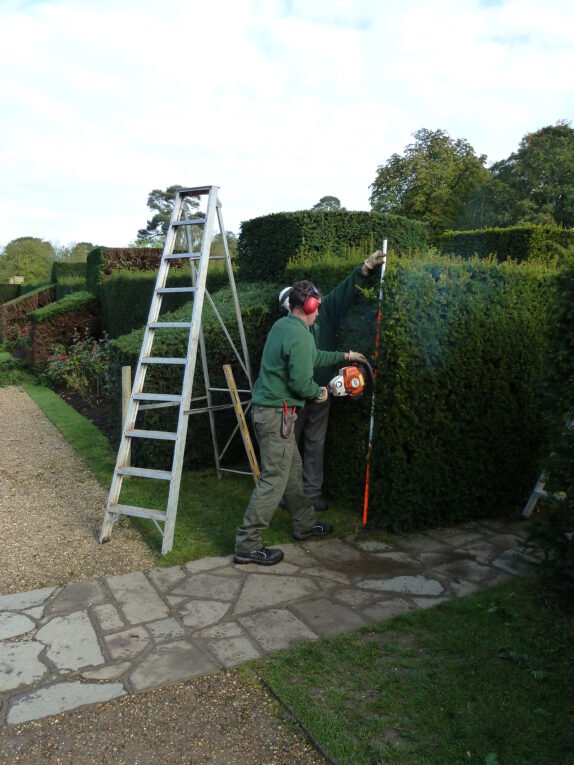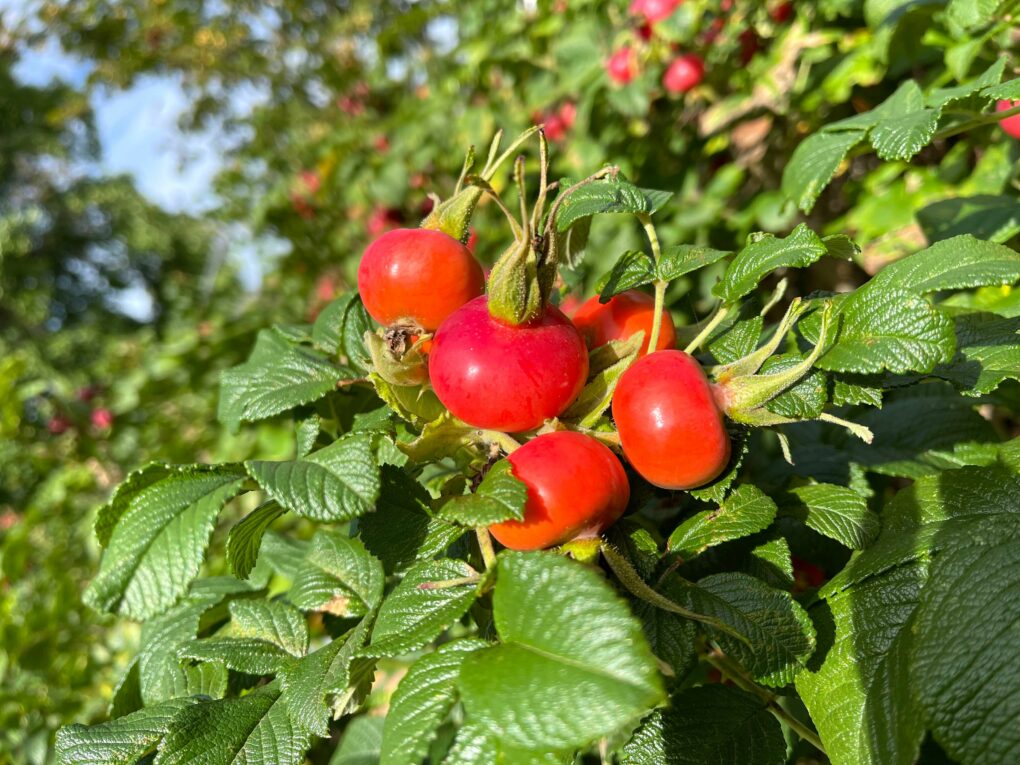
Head Gardener Neil Miller shares his August gardening jobs.
The willowy verbena are dancing in the late summer breeze in August and there’s a change in the air. If you look up, you’ll see the swallows and house martins gathering, and the swifts already gone for their winter break in Africa.
Wildlife is all around us at Hever Castle & Gardens and the team and I often swap stories in the gardeners’ mess room over lunch. Felix may have seen a magpie moth in the newly created Dye Garden and Darren may have noticed a holly blue butterfly in Blue Corner. It’s a sure bet that one of the team will have a story to share.
There is plenty we can do as gardeners to support nature and the wildlife in our gardens. If it’s hot and water is hard to find, we leave out water for the birds in tiny saucers – they need it for drinking and for taking a bath.
While you have your watering can out, it’s worth checking that your ponds are topped up, especially as we have had a good amount of heat this summer – nothing like last year’s scorcher, but it’s been warm enough to evaporate the water from the features.
The early perennials may be turning to seed in your long borders, but do leave the seed heads in place – they provide food for the birds and visiting wildlife in the harsher months of winter. I’m a stickler for leaving the perennials to run to seed and I don’t cut them until late February.
August is a good time to cut your hedge, but before you get your shears out, make sure that the blackbirds and thrushes who like to nest a second time have left the hedges before you trim them.
We cut the yew in August and while this particular variety of evergreen is slow-growing, it’s quite a big job for us at the Castle. We have a beautiful chess set created from golden yew by former owner William Waldorf Astor at the turn of the 20th century. Over the last couple of years we have been renovating the set, and reduced the ‘pieces’ in height order to create a more compact and visually impactful display.
If your yew is overgrown, it’s actually better to take it slowly and cut back over a couple of years. We have spent the last few years trimming the chess set gently, so that we can create a denser effect. Unlike most conifers of age, the yew tree will provide new stems from old wood.
While people remark upon the age of our yew and are impressed by the fact that they’re over 100 years old, they’re actually youngsters in the yew world – if looked after properly, yew trees can grow for 1,000 years!
If you have visited Hever Castle & Gardens this month then make sure you take a leisurely stroll on Lake Walk – the bird spotting opportunities there are many and varied.
This quiet area of the grounds is home to owls, blue tits, robins and woodpeckers. If you’re lucky you may spot a kingfisher close to the reeds. You’ll no doubt see swans, herons and great crested grebes on the lake itself. As a gardener there’s no greater sight that seeing tawny owls, barn owls and common tern when they appear to almost hover above the lake and dive down to catch a fish.
One final tip that will help enhance your garden even further as a top destination for wildlife visitors – refrain from deadheading your shrub roses and allow the rose hips to redden so that they provide fantastic colour, and a great food source for garden birds.

Book your visit to Hever Castle & Gardens.
Within the grounds of the Hever Castle Estate, there are two opportunities for you to stay the night with us.
Hever Castle has played host to many important events and celebrations for over 600 years. In 1903 when William Waldorf Astor set about restoring Hever Castle to its former glory, he added the Astor Wing, to accommodate his family and guests, before creating a lake and the spectacular Italian Garden to house his impressive collection of ancient Greek and Roman statuary.
There are multiple places to eat & drink across the Hever Castle Estate. Select between the Castle & Gardens and Golf Club below to discover more.
Set in the mature grounds of the Hever Castle Estate, Hever Castle Golf Club is a 27 hole Kent golf course that will encourage and inspire all golf enthusiasts.
Set in the mature grounds of the Hever Castle Estate, the Wellbeing Centre consists of five smart treatment rooms.